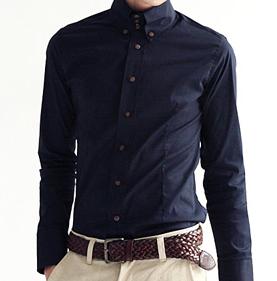Can we not move forward together? In the original highly competitive men's trade show industry, this answer became "energy." At the recent Fairchild Fashion Media menswear summit, four senior menswear exhibition curators shared their experiences and reached the common conclusion that different menswear trade fairs can survive and thrive in the same period by tracking and positioning market segments. . Camo Fabric,Camo Material,Pink Camo Fabric,Army Digital Camo CHANGXING JINMAOCHANG TEXTILE CO.,LTD. , https://www.jmcknittedfabric.com
“Subdivision†determines the future of men’s clothing “Every show has its own unique DNA and perspectives,†said Sam Ben-Avraham, founder of Liberty Fairs and Atrium. “This is a way for the show to stay connected with the fashion industry. I don’t think men’s trade The exhibition market is left to the blank of large-scale companies. Instead, it will be an industry where many small-scale exhibition companies co-exist.†Based on this view, Ben-Avraham founded Modern Assembly last year — a league of industry associations — Liberty Fairs and Events such as Agenda, Capsule, and MRket are joined together to fight against the industry's "big" Project and the MAGIC Group behind it. He explained: "When you become a big and indecent company, it is even more difficult to grasp the ever-changing trends and trends. Each small show must have its own position, share a certain market share. Finally, all the exhibitions are united together for the fashion industry. Provide a better and more efficient display platform."
The Project show's **Tommy Fazio believes that Project wants to be more of a "great display platform to put contemporary men's, women's, senior jeans and designer brands under the same roof." He insisted that the fashion show still has a huge market Blank, such as "American designers in the upper middle class." So he launched the Tents show on the basis of the Project exhibition and showed these brands to “30,000 retailersâ€.
Aaron Levant, a brand that refuses to “get trendyâ€, is the founder of Agenda. The exhibition is rooted in youth culture and focuses on active sportswear, street fashion, sports shoes and fast-selling electronics. In order to maintain the core values ​​of the youth culture, Agenda rejected many of its own fashion show brands, those trendy brands. “Some brands are very hot, but they are notorious at the same time. I think that their aura will soon disappear. Many brands at Agena have been around for 30 or 40 years. We are concerned that these brands surpass those “successful†brands. "But Agenda still embraces mainstream brands such as Adidas and Nike, but here they usually show "special product categories" rather than all-encompassing product lines.
He also firmly rejected many potential exhibitors. Levant said: "I think the criteria for entering are already very low, but I still have to reject applications for about 1,000 brands a year. It wouldn't be Designer who uses Illustrator, so the printer can also create a brand." He always uses " "Personal views" and 11 years of industry experience have eliminated those brands that he believes are "less valuable."
Since its inception in 2007, Capsule has always appeared as a "professional curator," and its opposite is the kind of pros and cons of selling high-priced booths. Deirdre Maloney, the founder of Capsule and BPMW Agency, said: “I often think of two issues. First, what is the current trade show? Second, what kind of trade show should be? I think it should be a product. Show space and brand where sound can be heard.†At Capsule, the product has a supreme position. “We carefully planned the exhibition, provided the best equipment, showed our position, rejected more brands than accepted brands, because we have to let buyers and the media know that you can find the best products in Capsule. Those who pay attention to product quality Brands that have the courage to innovate in products. Regardless of their current qualifications, we are likely to be the next big brand in our eyes."
Retailer-led In order to provide a differentiated experience, the show organizers are trying to listen to the retailer's recommendations and try to meet their needs. For example, the number of days a show is held is usually determined by the retailer's need to spend time to finish the exhibiting brand. In Las Vegas, clothing shows usually last three days. “The duration should be for better viewing and buying experience services,†Fazio said. “Our site setting allows visitors to watch and move around efficiently and fluently. Three days is enough.†The settings he said include digital device navigation, Obvious signposts, as well as full communication with retailers prior to the show, indicate which brands will participate and in what areas.
Looking into the future, four curators pointed out that the pattern of the fashion retail industry is changing—the number of physical retail stores will be decreasing, and B2C and e-commerce will become more and more. "The number of retail stores is growing at a slowing pace," Levant said. "The industry has solidified and many retail stores have closed. Especially those small independent stores run by individuals or families. We also see brands exploring B2C and other channels. In general, there has been no major incident in the retail industry for a long time, and chain stores, independent stores, and department stores have performed very conservatively, so the support given by the retail industry to a large number of emerging brands awaiting the market Too small. This is a cruel game of grabbing a chair, and some players are doomed to lose. I'm sorry, I think the brand will be the loser."